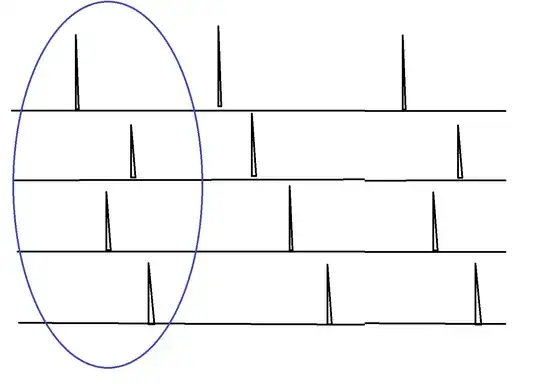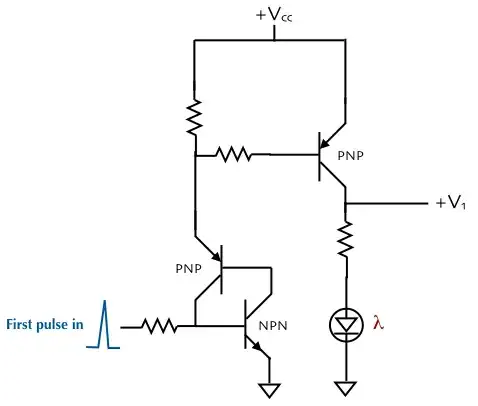How do I detect a pattern of 4 pulses from 4 different signals? I want to be able to detect every time I see for example the pattern circled in blue. When I detect this pattern, I want to output a digital high signal. The pulses can come in different orders (as can be seen by the middle group of 4 pulses). I can only create my circuit using transistors, capacitances, resistances, current sources and voltage sources.
I plan to use a hysteresis comparator in some fashion to compare the signals to some threshold voltage (so as to account for a small amount of noise after filtering). But I don't know how I can compare 4 signals at the same time.
Any help would be greatly appreciated! Thank you so much!

